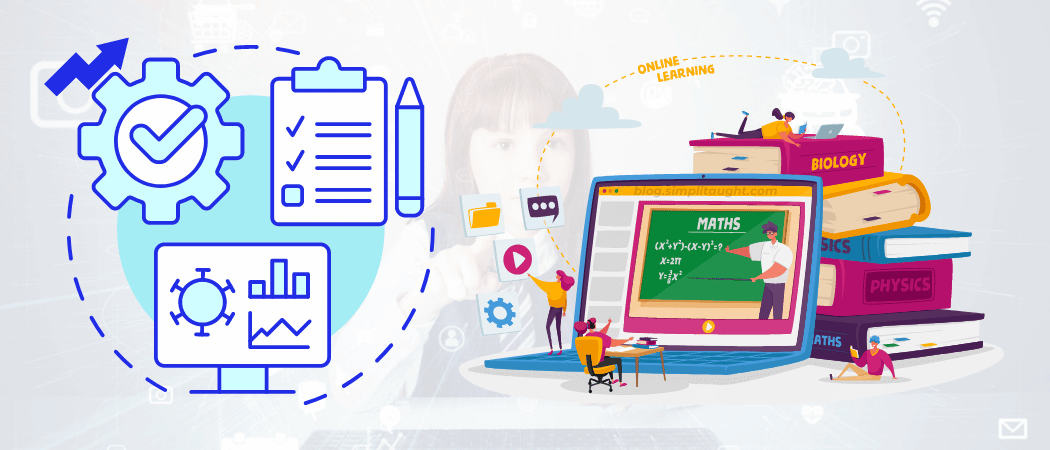Traditionally, in-person classes have been an effective way to learn and teach. It produced satisfactory and visible results and wasn’t questioned until the world faced unprecedented times. Then, the Covid-19 pandemic brought everything to a standstill, and attending traditional face-to-face classes became impossible.
Technology proved sufficient and could deliver the same, if not better, results in the learning process. The impact of technology on education is evident.
The Importance of Technology in Classrooms
Learners who study through technology can develop skillsets that will help them throughout their educational and professional journeys.
Technology offers the following benefits;
Offers Easy Access To Educational Resources
Today, more than ever, students rely heavily on technology in their everyday lives. So, why not integrate AI into education? Students of all ages use their smartphones and tablets outside classrooms and should be trusted to use these gadgets and tools for educational purposes.
Using a familiar tool helps students stay motivated and engaged in the classroom for academic learning. Besides, learners can learn on the go, as they can easily access digital learning resources through their mobile phones and laptops.
Improves Overall Learning Experience
Education technology enhances the overall learning experience by making education more engaging and collaborative. For example, learners learn by doing and using critical thinking abilities instead of memorizing the facts.
It could be as easy as taking an interactive online quiz or participating in a tech-enabled group discussion. Or students can play educational games, practice science experiments in virtual labs, or take virtual field trips.
To make the educational experience genuinely engaging, it should be truly interactive. For example, doing Maths on the computer is no different from doing it on a pad of paper. So, utilizing augmented reality to animate math challenges is even more interactive. Hence, technology and interactivity improve learning.
Technology is making teaching easier for educators. From using simulation tools to showcase how a hurricane develops to utilizing virtual reality to practice medical techniques and procedures, technology is making learning complex subject matter effective and seamless.
Personalized Learning
Expanding your skillset with demanding lifestyles and hectic schedules has become challenging and vital. This is where technology proves helpful. Education has become more convenient, with online lessons replacing conventional lectures.
Learners can schedule their time and learn at their own pace. Moreover, they can pursue courses and subjects outside their curriculum to broaden their knowledge.
The technology ensures that students have continuous access to knowledge and information. Lectures can be entirely online using smartphones or laptops. Likewise, a blended learning model enables students to learn from anywhere combined with regular in-person classroom sessions, demonstrating the impact of technology on education.
Moreover, educators can use technology to tailor lesson plans to each student’s needs and preferences. As a result, lectures can be designed around learners’ interests and strengths.
Another benefit of online lectures is that students can rewatch videos of lessons when they need to review class material to grasp the key concepts better. Moreover, instructors can use the generated data from online activities to determine which students struggle and need extra support and help with certain subjects.
How is Technology Transforming Education?
Education costs have been significantly reduced with options like online learning and degrees. Students no longer need to buy physical textbooks and can access scholarly articles from their university’s database. In addition, they can easily continue learning from another country without leaving their home.
Students no longer need to enroll in complete degree programs to study at the best universities in the World. Usually free for student use, most academic journals provide full access to digital versions of the books. Even if you are not currently enrolled in any program or a part of any educational community, you can still download various articles, videos, etc., to your phone, making the learning experience accessible with mobile learning.
Education has become more accessible and flexible due to technological advancements. There has been a growing popularity of distance learning, physical boundaries have disappeared, and many stakeholders have embraced technology to supplement the educational process. As educators, various tools are used to improve the classroom experience and motivate students to learn, such as;
Kahoot!
Learners and educators can produce an interactive questionnaire in minutes, utilizing a series of multiple-choice questions. Kahoot! is best suited for group settings, with students answering questions on their individual devices and results being displayed on shared screens to unify the lessons or games.
SimpliTaught
SimpliTaught uses artificial intelligence and machine learning to adapt the learning experience to individual students’ needs. They offer customized content around key learning concepts making education hassle-free.
Trello
This project management tool helps educators to teach learners how to stay organized and streamline their assignments. Students can use Trello to generate workflow charts, educators can use it to track student progress, or both can collaborate on the same project.
Prezi
Prezi’s outstanding open canvas enables you to organize and customize your presentation, or you can choose from millions of sales, business, marketing, and education templates, among others.
Nearpod
On Nearpod, instructors can easily upload lessons, polls, quizzes, etc., and access learner responses in real time. In addition, these lessons are easy to customize and download, letting students choose from various content that suits their needs.
Classdojo
This all-inclusive app offers a wide range of features, including classroom music, a random group generator, a classroom timer, a random student selector, and a morning meeting app. The Group Maker is a very effective tool for interactive classroom activities, automatically arranging learners into pairs and groups.
Final Thoughts!
Learners interact with technology off-campus, so incorporating the tools into classrooms can help make learning easier. Additionally, technology simplifies the teaching process for educators, letting them do their jobs effectively by forging a healthy relationship between students and teachers.
With the growing use of smartphones and tablets in classrooms, learners can ask questions and get immediate answers from teachers. They also learn about technological tools, which is an impressive skill for their future employers.
Also, the accessibility of education worldwide has improved thanks to free educational tools readily available online. Now, you can easily earn a fully-accredited bachelor’s or master’s degree remotely and entirely tuition-free. Furthermore, most people opt for online courses because of the flexibility in schedules and study environments they offer. Hence, online learning is the perfect solution for those who cannot commit to a full-time academic course but are eager to advance their knowledge.
Apart from access to information, new technologies can empower and excite students. As many children are already familiar with smartphones and tablets, learning through technology will likely become more enchanting than daunting. In addition, instructors using such tools may see improved classroom engagement and participation.













